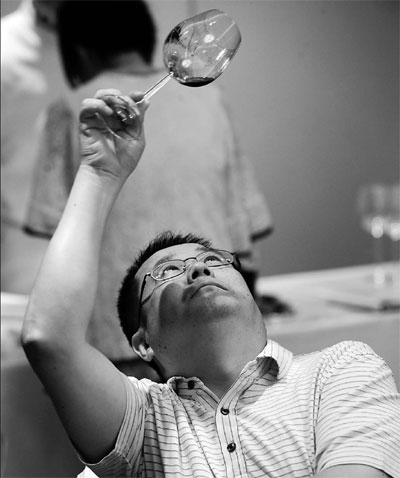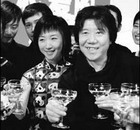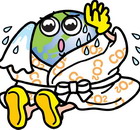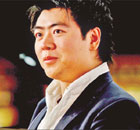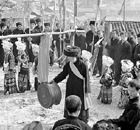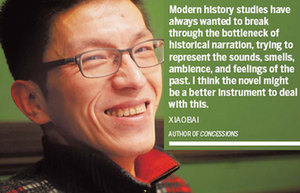Delicacies
Salud! Cheers! Ganbei!
By Pauline D Loh (China Daily)
Updated: 2011-02-08 07:36
 |
Large Medium Small |
|
A potential investor is sampling wine at a wine auction in Hong Kong. Anthony Dickson / Agence France-Presse |
Wine distributors are stocking up in China, and the new season for good cheer is the Spring Festival. Pauline D Loh tracks the well-lubricated changes in China's drinking traditions.
This year, many bottles of Chateau Lafite will be opened at reunion dinners and Spring Festival gatherings. Many more bottles of red and white wine will be drunk or delivered as gifts to favored friends and relatives, as well as bosses and clients. The country's wine consumption is increasing by 20 percent annually, and it is expected that by 2014, China's connoisseurs will be opening more than 125 million cases of wine. Already, major wine producers from both the Old World and New World are gathering at the door, snapping up and guarding their portions of the pie in this very new but very vigorous market. In only a decade, China has overtaken the United Kingdom as the fastest growing market for Australian wines, and is now Australia's fourth-largest market.
The Australians have a definite advantage. They love to eat as much as they love to drink, a happy meeting ground that Chinese gourmets are glad to share. Most Australian wines are made to pair with food, an ideal marketing stance that appeals to the new generation of wine drinkers emerging from China's sophisticated post-80s generation of upwardly mobile professionals.
Compare this with the situation a decade ago, which is a mere tick in time when it comes to talking wine.
My brother was getting married in Shanghai. It was going to be a grand reception and, apart from the cognacs and single malts that are necessary to help guests stay happy, he wanted a wine and food pairing.
The wedding planner had introduced him to a French wine importer, who was determined to sell him expensive cases of chateaux vintage. The problem was they were all heavy reds that would definitely make the guests pucker up if they were to be paired with the delicate seafood entrees on the banquet table.
We finally hunted down a wine cellar with a good selection of New World wines, and we chose a Chilean Pinot, a New Zealand Sauvignon Blanc, a South Australian sparkling Shiraz and the Yarra Valley Noble One.
While we were browsing the shelves, the cellar owner took a long look at us and asked if we were expatriates, in spite of the fact that David and I were nattering away in our mother tongue. Why, we asked? Because you are looking at the wine varietals and not the price, he replied.
That was how the Chinese were buying wines at that time. Taste had nothing to do with it. Drinking a French red was the in thing. And if it had a high price tag, that showed both your ability to pay and your ability to appreciate the wine.
Such ostentatious display is a thing of the past. The Chinese wine connoisseur was quick to learn, to go below the surface and dig deeper into the art of wine, helped by tenacious distributors who not only sold wines, but also wine appreciation courses.
Young Chinese were also traveling a lot more, and exposure abroad is one of the best ways to adopt new wining and dining habits.
In China's urban hubs such as Beijing, Shanghai and Guangzhou, there is a proliferation of wine bars where mainly younger drinkers gather for wine and conversation.
Fast forward to this year's Spring Festival. My brother-in-law, a die-hard fan of the Chinese huangjiu or yellow liquor, is leaving his personal stash behind when he takes his family out for the traditional dinner on the eve of the Spring Festival.
Instead, he will be asking to see the restaurant's wine list. He's done his homework too, and he will order a red wine for the meat courses, and a white wine for the seafood courses. He's going to bring two bottles of Verve Cliquot Yellow Label champagne to toast the New Year in.
Why is he switching?
"The kids won't want huangjiu and they prefer wine. Besides, my doctor told me it's healthier to drink red wine."
And there you have it. Older people in China are paying greater attention to television and radio health programs' warnings about the harm of high alcohol content liquor and the health benefits of moderate amounts of red wine.
My brother-in-law still thinks wine is too watered down for his taste, but at 61, he reasons that it is time to slow down on his hard drinking. And the restaurant he's chosen is not a high-end outlet at a hotel. It is a neighborhood restaurant catering to residents, and it boasts a wine list of about 100 vintages.
Changing social etiquette is another reason for the sharp rise in wine sales and consumption.
Business lunches and dinners were always well-lubricated affairs with bottles of liquor - and manners dictated that the hosts and guests exchanged goodwill and good wishes with frequent toasts. This worked when things were a lot slower and both hosts and guests could retire for an afternoon nap to sleep off the effects.
But these days, business is done at breakneck pace and no one can afford to sleep on the job. Unless you have a high tolerance of alcohol, milder red and white wines are a better choice. Besides, it impresses clients if you can discuss the wine pairing like an expert with the sommelier.
There is one more element to the growth of wine sales in China - investment.
At online shopping sites, you can find specific distributors of wine chillers and wine cabinets, and they are chalking up record sales as investors buy bottles for future consumption or profit.
At a Hong Kong wine auction in mid-January, mainland investors carted off a case of Chateau Lafite-Rothschild for about $71,000, or about $6,000 a bottle. Last year, Hong Kong replaced New York as the auction center for wines, thanks largely to its mainland clientele.
Hong Kong holds two major wine fairs annually, and the figures coming out of them show every sign that, in another decade, China may well become the world's top wine-drinking country.
These figures have not gone unnoticed by investors who are seeking long-term benefits. More and more foreign investors are considering establishing their own vineyards in China and they are looking at all the traditional grape-growing areas, including Yunnan and Qinghai provinces, Xinjiang Uygur autonomous region and the outskirts of Beijing.
This is where they will also be exploring the fledgling industry of wine tourism and vineyard cuisine. Already in Miyun, under the shadow of the Great Wall, Chateau Changyu is attracting visitors.
But the growing popularity of wine does not mean traditional Chinese liquor sales are falling. If advertisements on television and at bus stops are anything to go buy, Chinese liquor manufacturers are protecting their slice of the market with elaborate packaging, clever campaigns and celebrity endorsements.
Maotai, Wuliangye and Erguotou account for the lion's share of liquor sales, but regional brews are slowly getting in on the act. Chinese spirits, too, are learning modern marketing techniques and it is not uncommon for high-end bars and pubs to stock a small selection of native brews, both for local customers and curious expatriates.
The battle is just beginning, and for the first time in many years, it looks like the mighty grape may prevail.
"Putao meijiu yeguang bei" - delicious grape wine served in a translucent crystal glass - was one of the first tributes to wine written by Wang Han, a Tang Dynasty poet who lived at the time when Persian traders first introduced wine via the Silk Road.
These days, the grape is imported through all of China's seaports, and it is finally getting reacquainted with an old friend.
(China Daily 02/08/2011 page8)
